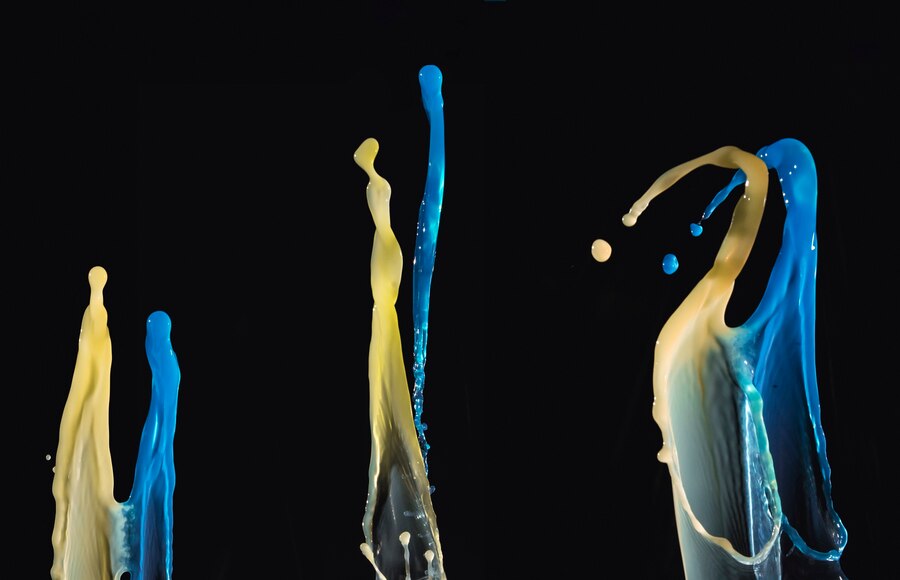
As an artist, you’re constantly pushing the boundaries of creativity and innovation in the world of acrylic art. But, in an era dominated by bold colors, intricate details, and elaborate themes, it’s easy to get caught up in the excitement and lose sight of the importance of simplicity. Minimalism, however, offers a refreshing respite from the chaos, allowing artists to distill their work down to the essence of what truly matters.
In this article, we’ll delve into the world of minimalist acrylic art, exploring its history, principles, and benefits. We’ll also discuss how to incorporate minimalism into your work, providing you with practical tips and inspiration to help you create stunning pieces that exude simplicity and elegance.
What is Minimalism in Art?
Minimalism, as an art movement, emerged in the 1950s and ’60s, characterized by its use of simple forms, clean lines, and limited color palettes. The movement’s proponents, including artists like Donald Judd, Dan Flavin, and Agnes Martin, sought to strip away unnecessary elements, focusing on the fundamental aspects of art itself.
In acrylic art, minimalism translates to a reduced emphasis on decoration, ornamentation, and complexity. Instead, artists focus on clean lines, subtle colors, and a limited range of textures. By paring down their work to its essence, artists reveal the underlying beauty of the materials used, the space itself, and the emotional resonance of the piece.
Benefits of Minimalist Acrylic Art
Minimalism offers several benefits for acrylic artists, including:
- Clarity and Focus: By stripping away extraneous elements, minimalist art forces the viewer to focus on the core essence of the piece, fostering a deeper connection with the artwork.
- Creativity and Originality: Minimalism allows artists to think outside the box, exploring new ways to express themselves without the constraints of traditional techniques.
- Emotional Resonance: The simplicity and elegance of minimalist art can evoke powerful emotions, creating a sense of calmness, serenity, and contemplation.
- Innovation and Experimentation: Minimalist art encourages artists to push the boundaries of their creativity, experimenting with new techniques, materials, and concepts.
Tips for Incorporating Minimalism into Your Acrylic Art
So, how can you incorporate minimalism into your acrylic art? Here are some practical tips to help you get started:
1. Simplify Your Composition
- Avoid cluttering your canvas with too many objects, patterns, or colors.
- Focus on a single dominant element or theme, letting it take center stage.
- Experiment with negative space, using the absence of form to create a sense of emptiness and focus.
2. Limit Your Color Palette
- Choose a limited range of colors that evoke a specific mood or atmosphere.
- Experiment with different colors and textures to create a cohesive, harmonious whole.
- Use white space and empty areas to create a sense of balance and equilibrium.
3. Emphasize Texture and Form
- Use textured materials or techniques, like impasto or drybrushing, to add depth and interest to your piece.
- Experiment with different shapes, lines, and forms to create a sense of tension and release.
- Play with scale, using large or small elements to create a sense of drama and surprise.
4. Draw Inspiration from Nature
- Study the simplicity and elegance of natural forms, like leaves, rocks, or flowers.
- Use natural elements, like branches, seeds, or sand, to add texture and interest to your piece.
- Experiment with abstracting natural forms, using bold colors and simple shapes to evoke a sense of the natural world.
Real-Life Examples of Minimalist Acrylic Art
To give you a better sense of what minimalist acrylic art looks like, let’s take a look at some real-life examples:
- Agnes Martin: Known for her grid-based paintings, Martin’s work embodies the essence of minimalism. Her use of simple colors and shapes creates a sense of calmness and serenity, drawing the viewer’s eye to the subtle, underlying structure of the work.
- Donald Judd: Judd’s minimalist sculptures, like his famous “Stacks,” demonstrate the power of simplicity and elegance. By using clean lines, precise angles, and a limited range of colors, Judd creates a sense of drama and tension, inviting the viewer to explore the work from multiple perspectives.
- Julie Mehretu: Mehretu’s large-scale abstract paintings, often incorporating elements of architecture and urban planning, showcase the potential of minimalism in acrylic art. Her use of simple shapes, clean lines, and a limited range of colors creates a sense of harmony and balance, drawing the viewer’s eye to the intricate details and textures that underlie the work.
How to Get Started with Minimalist Acrylic Art
Ready to give minimalist acrylic art a try? Here’s a step-by-step guide to help you get started:
- Gather Your Materials: Collect a range of acrylic paints, brushes, and canvases in different sizes and shapes.
- Choose a Theme or Concept: Decide on a simple theme or concept, like a single flower, a branch, or a geometric shape.
- Sketch Out Your Composition: Use a pencil or charcoal to sketch out a simple composition, experimenting with different shapes, lines, and forms.
- Apply a Base Coat: Use a simple color to create a base coat for your painting, covering the entire canvas or a large area.
- Add Texture and Interest: Experiment with different textures and techniques, like impasto, drybrushing, or layering, to add depth and interest to your piece.
- Limit Your Color Palette: Choose a limited range of colors that evoke the mood or atmosphere you’re trying to create.
- Refine Your Piece: Refine your piece, making adjustments as needed to create a sense of balance and harmonious whole.
FAQs
Here are some frequently asked questions on incorporating minimalism into contemporary acrylic art:
Q: What is the main principle of minimalist art?
A: The main principle of minimalist art is the use of simple forms, clean lines, and limited color palettes to create a sense of simplicity and elegance.
Q: How can I incorporate minimalism into my acrylic art?
A: Start by simplifying your composition, limiting your color palette, and emphasizing texture and form. Experiment with different shapes, lines, and forms to create a sense of tension and release.
Q: What are some real-life examples of minimalist acrylic art?
A: Examples include Agnes Martin’s grid-based paintings, Donald Judd’s sculptural works, and Julie Mehretu’s large-scale abstract paintings.
Q: How do I get started with minimalist acrylic art?
A: Gather your materials, choose a theme or concept, sketch out your composition, and apply a base coat. Add texture and interest, limit your color palette, and refine your piece as needed.
Q: What are the benefits of minimalist acrylic art?
A: Minimalist art encourages clarity, focus, creativity, and emotional resonance. It also allows artists to innovate and experiment with new techniques and materials.
Conclusion
Minimalism offers a refreshing respite from the chaos of contemporary art, allowing artists to distill their work down to its essence. By incorporating minimalist principles into your acrylic art, you can create stunning pieces that exude simplicity and elegance, inviting viewers to focus on the core essence of the work. With these practical tips and real-life examples, you’re ready to get started with minimalist acrylic art. So, experiment, innovate, and push the boundaries of your creativity – the world of minimalist art awaits!
